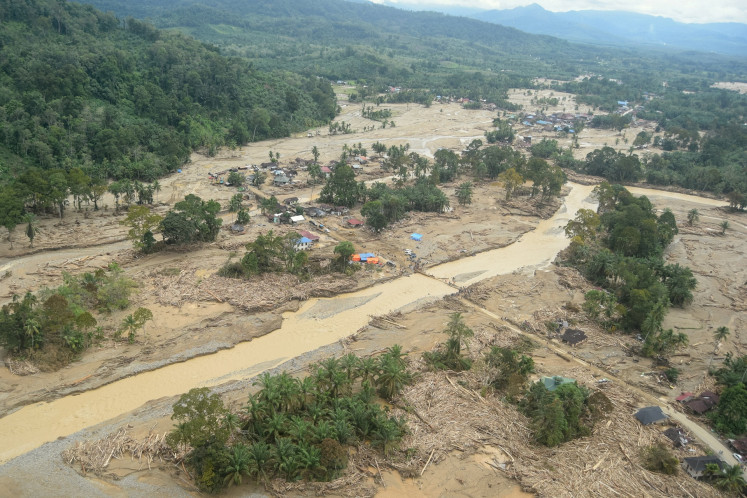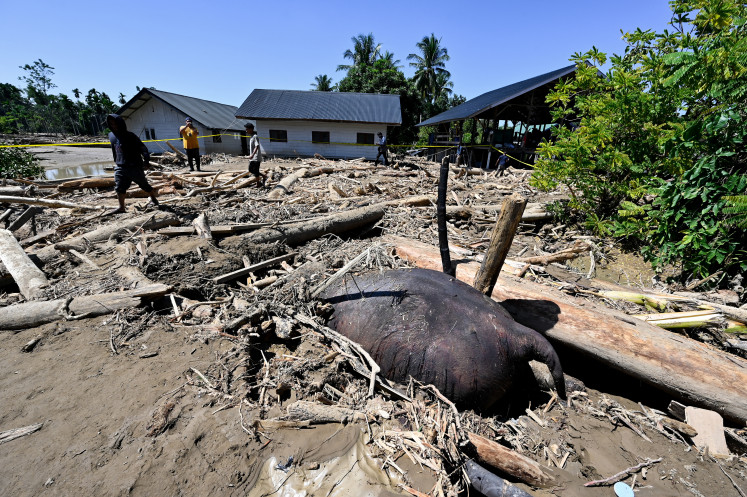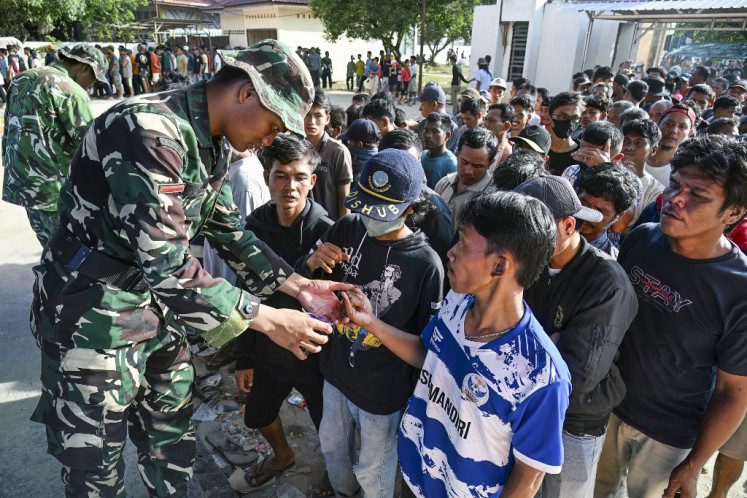Popular Reads
Top Results
Can't find what you're looking for?
View all search resultsPopular Reads
Top Results
Can't find what you're looking for?
View all search resultsPapua to expand green development
The Papua provincial administration has announced that it will resume a low-emissions initiative that was introduced previously by the EU
Change text size
Gift Premium Articles
to Anyone
T
he Papua provincial administration has announced that it will resume a low-emissions initiative that was introduced previously by the EU.
The program, titled Participatory Monitoring by Civil Society of Land Use Planning for Low-Emission Development Strategy (Parcimon), is set to end in 2016 but will be picked up by local administrations.
“The Papua administration always supports programs that improve people’s welfare, just like the green development programs in Parcimon,” said Papua Deputy Governor Klemen Tinal during a press conference with EU Ambassador to Indonesia and Brunei Darussalam Vincent Guerend on Monday.
Klemen said there would be a memorandum of understanding (MoU) between the central government and local administrations for the green development programs.
Parcimon has been running in Papua since 2013 to educate people in three regencies — Jayawijaya, Merauke and Jayapura — about green development.
Sonya Dewi, the World Agroforestry Center (ICRAF) Indonesia coordinator, said that Parcimon had helped to monitor and evaluate development programs in the region.
“Through capacity building, the local administrations can reduce obstacles to reducing greenhouse gas emissions and support low carbon development,” she said.
Among Parcimon’s programs is one where where residents measure greenhouse gas emissions and use data to work toward green development. Guerend said that the government would continue Parcimon’s programs and implement them in other regions also.
“The European Union hopes that the end of Parcimon in Papua will mean the beginning of its implementation in more regions,” he said.
In Jayapura regency, Dewi said a team tasked with running the low-carbon programs had developed eight mitigation actions that had reduced CO2 emissions by 19.2 million tons.
The Papua administration has also formed an action plan to reduce emissions, through Gubernatorial Regulation No. 99/2013.
Klemen said Papua residents should help preserve forests. “Investors in the region should also support the sustainability of Papuan forests since they form part of the world’s lungs,” he said.
Through Parcimon, Mulima villagers in Jayawijaya have been introduced to a number of economic activities such as farming honey bees, breeding pigs, planting fruit and breeding fish in ponds, as well as cultivating vegetable crops to meet their daily needs or to sell for extra income.
These activities will hopefully support the government’s carbon emissions reduction programs as locals will no longer need to fell trees to meet their basic needs.
In Jayawijaya, Parcimon, through its local partner ICRAF Indonesia, has developed 10 emissions reduction strategies.
Local communities, for instance, can participate in preventing declines in carbon stocks by maintaining protected forests and Lorentz National Park conservation areas.
They can also increase carbon stocks by, among other things, maintaining the function of primary and secondary forests, planting ulin (ironwood) trees, cultivating coffee and fruit crops and by planting cassowary trees on idle land, transforming it into secondary forest.
“If the 10 emissions reduction strategies run successfully, emissions in Jayawijaya regency could be reduced by 50.18 percent by 2020, exceeding the national target of 41 percent,” said the head of the Low Emissions Development Planning, Monitoring and Evaluation Working Group, Dadi Permadi.










